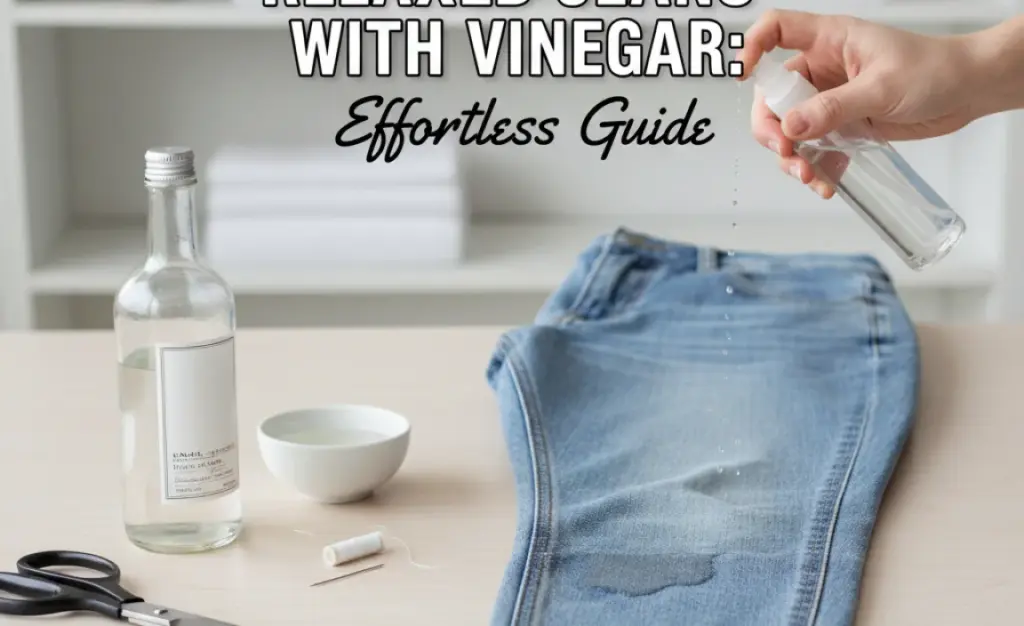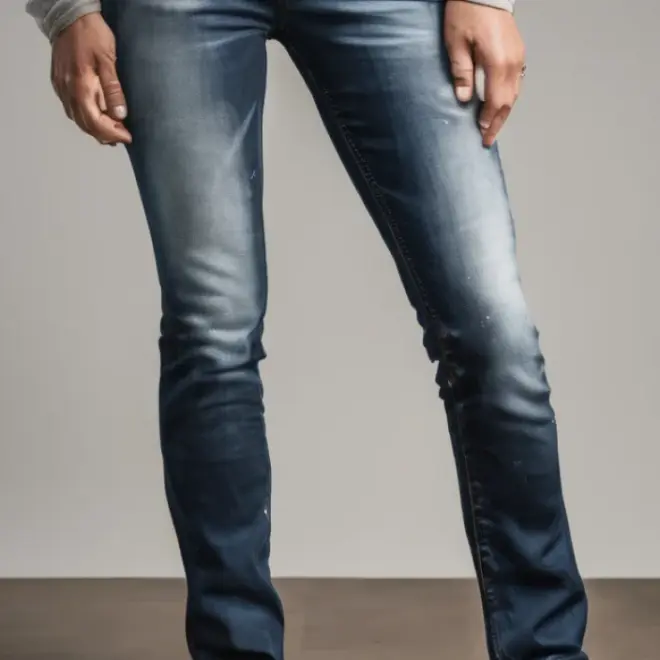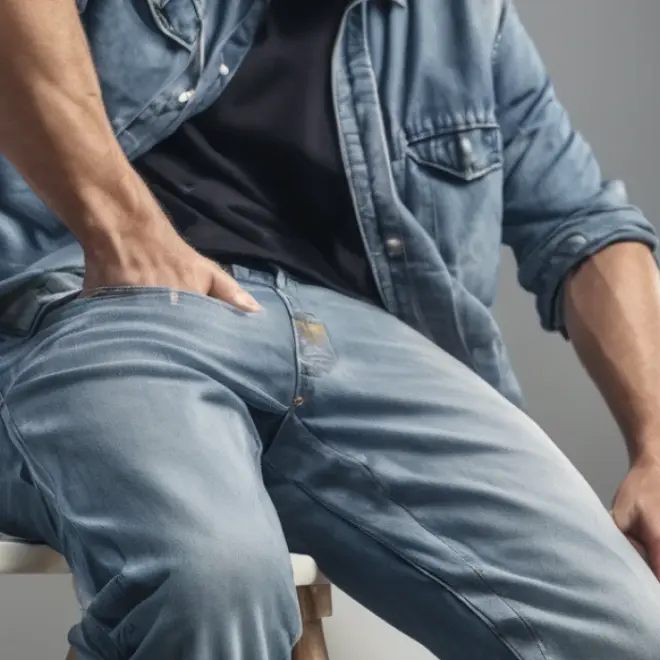Quick Summary:
Learn how to easily hem relaxed jeans using vinegar for a simple, no-sew solution. This guide provides a straightforward method to adjust the length of your favorite denim without needing sewing skills, ensuring a perfect fit every time.
Beyond the Cuffs: Achieving the Perfect Jean Length with Vinegar

Finding jeans that fit just right can feel like a minor miracle. But what happens when your favorite relaxed-fit pair are just a tad too long? Instead of heading to a tailor or struggling with a sewing machine, there’s a surprisingly simple trick using common household ingredients. This guide will walk you through how to hem relaxed jeans with vinegar, a method that’s as effective as it is straightforward. You won’t need any special skills, just a little patience and a few everyday items. Get ready to give your denim a perfect, customized length!
Why Hem Your Relaxed Jeans?
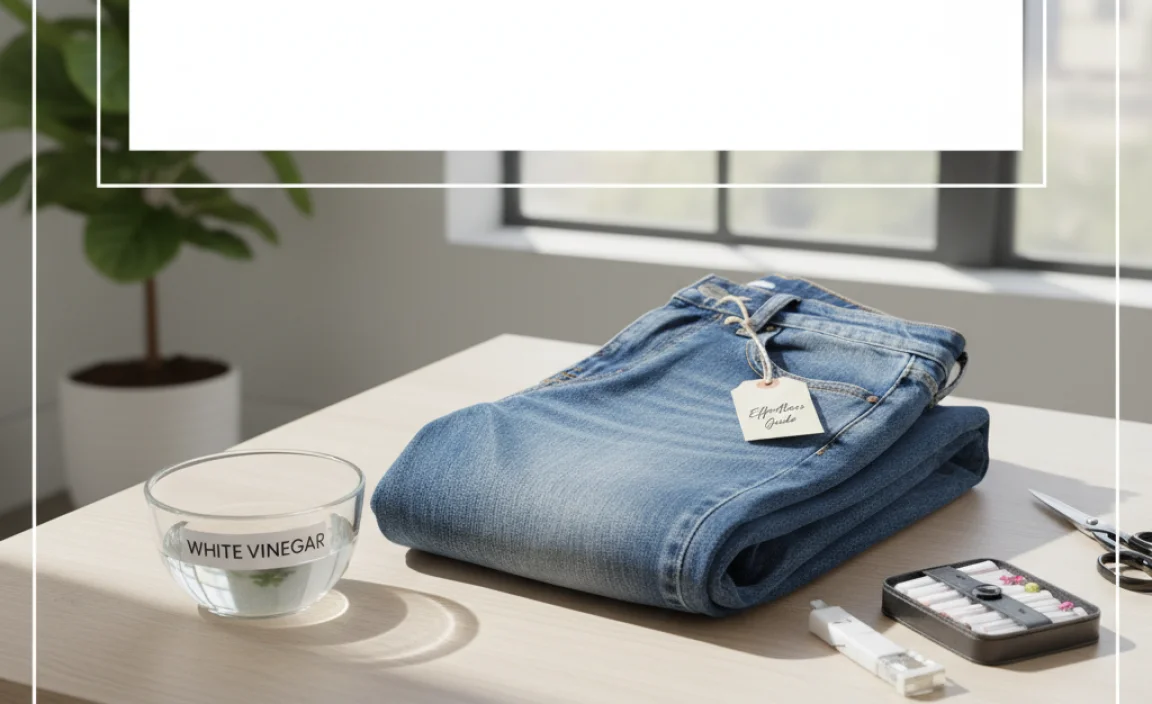
Relaxed fit jeans offer comfort and a laid-back style, but their propensity to be a bit longer than other cuts can sometimes lead to an unintended puddle at your ankles or a less polished silhouette. Properly hemming ensures your jeans look intentional, prevent premature wear on the fabric from dragging, and allow you to showcase your favorite footwear. Whether you’re aiming for a cropped look or just want to avoid tripping, a good hem is key.
The Vinegar Hemming Method: An Overview

You might be surprised to learn that a simple concoction of vinegar and water can help set a temporary hem on your jeans. This method works by using the acidic properties of vinegar to slightly stiffen and hold the fabric fibers in place, creating a clean fold that lasts for a few wears. It’s a fantastic no-sew alternative for a quick fix or when you want to test a new length before committing to permanent alterations. This isn’t about permanent fabric bonding; it’s about creating a temporary, neat fold.
What You’ll Need
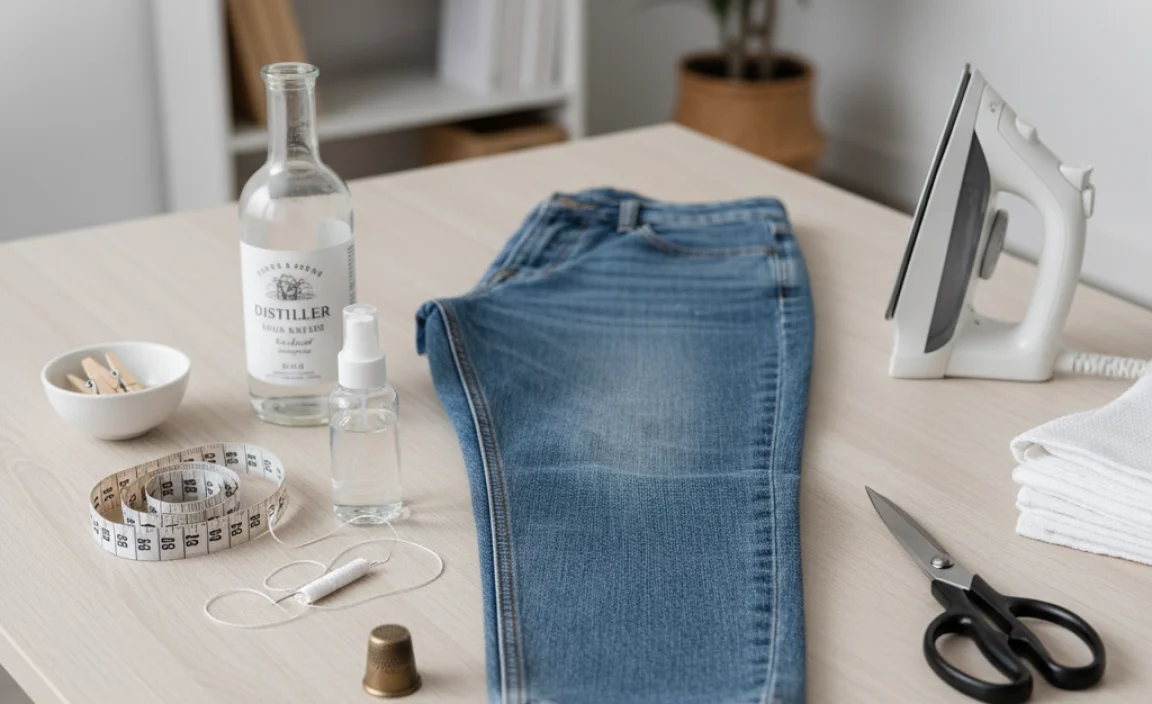
Gathering your supplies is the first step to a successful hem. Here’s what you’ll need:
- Your relaxed fit jeans
- White vinegar
- Water
- A spray bottle
- A clean, flat surface (like a table or floor)
- Measuring tape
- Fabric markers or chalk
- Optional: Iron and ironing board
- Optional: Small weights or heavy books
Step-by-Step Guide: How to Hem Relaxed Jeans with Vinegar
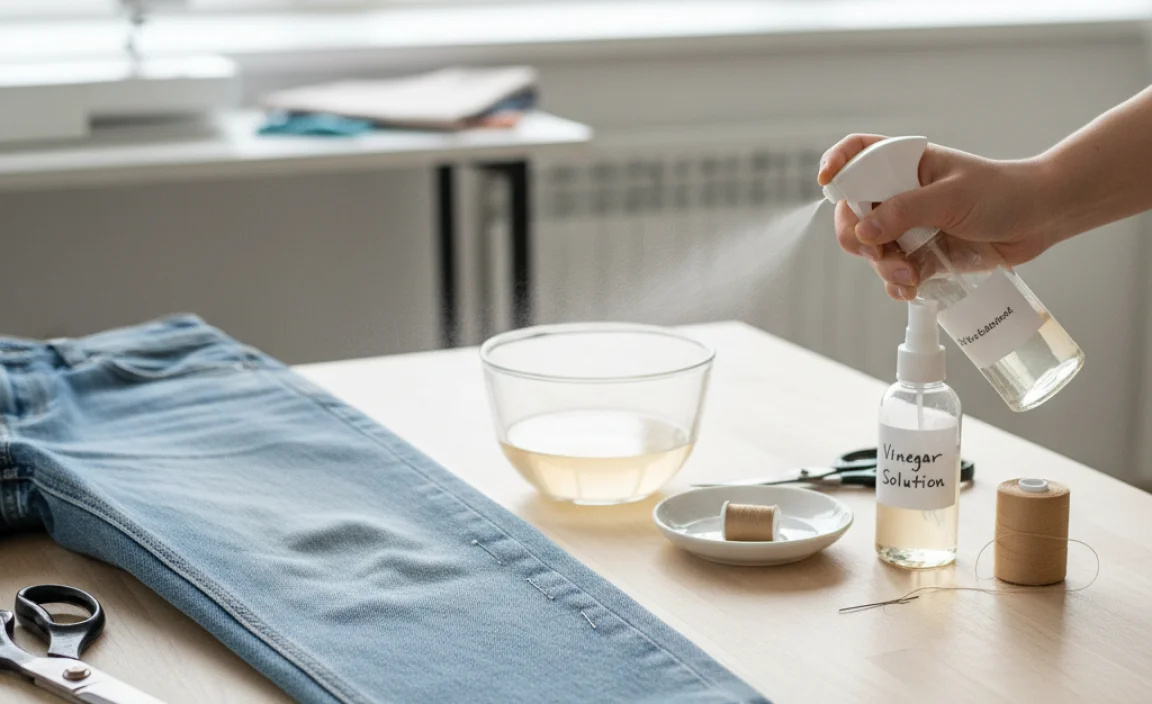
Follow these simple steps to achieve a neat, no-sew hem.
1. Pre-Washing and Preparation
Before you begin, ensure your jeans are clean. Washing them will remove any sizing or finishes that might interfere with the vinegar solution. This also helps account for any shrinkage that might occur before you even start hemming.
2. Determine Your Desired Length
Put on your jeans with the shoes you typically wear them with. Standing in front of a mirror, decide where you want the bottom of your jeans to fall. Use a fabric marker or chalk to make a small dot or line on the inside of each leg at your desired hem length. It’s often best to mark slightly longer than you think you need, as you can always trim more later.
3. Prepare the Vinegar Solution
In your spray bottle, mix equal parts white vinegar and water. For example, if you’re using 1 cup of vinegar, add 1 cup of water. Shake the bottle gently to combine the solution.
4. Apply the Solution and Fold
Lay your jeans flat on your clean surface. Carefully spray the bottom edge of each leg with the vinegar-water solution, focusing on the area where you marked your desired hem length and slightly beyond. You want the fabric to be damp, but not soaking wet. Now, fold the bottom of the jean leg up to your marked line. Press the fold firmly with your hands to create a crisp crease.
5. Set the Fold
This is where the vinegar works its magic. To help set the fold and ensure it stays in place while the fabric dries, you have a few options:
- Air Dry: Lay the folded jeans flat, carefully smoothing out any wrinkles. You can place weights (like heavy books) on the folded hem to keep it pressed down as it dries. This can take several hours, depending on humidity.
- Iron (Optional): For a quicker set, place a pressing cloth (like a thin towel or another piece of fabric) over the folded hem. Iron the area using a medium-high heat setting. The heat will help dry the vinegar solution and set the crease more firmly. Ensure you iron from the inside out if possible to avoid pressing the crease line visibly on the outside.
6. Repeat and Refine
Once the first fold is set, repeat the process for the second layer of the hem if you desire a more structured fold, or if your jeans require a deeper cuff. Spray the newly folded edge with the vinegar solution, fold it up again (this time to meet the original marked line, creating a double fold), and re-apply weights or iron to set. Check the length again to ensure it’s what you wanted. You can also trim any excess fabric if needed, ensuring you leave enough for a slight double fold.
7. Let It Dry Completely
Allow your jeans to air dry completely. This is crucial for the vinegar’s effect to take hold and for the temporary hem to remain secure. Trying to wear them before they’re fully dry might result in the hem falling out.
Pros and Cons of the Vinegar Hemming Method
Like any technique, the vinegar hem has its advantages and disadvantages. Understanding these will help you decide if it’s the right solution for your needs.
| Pros | Cons |
|---|---|
| No sewing required, accessible for beginners. | Temporary; the hem will likely loosen after washing. |
| Quick and easy for immediate adjustments. | May not hold as well on very thick or stiff denim. |
| Uses common household items, low cost. | Vinegar smell can be noticeable initially, though it dissipates. |
| Allows for experimentation with different lengths. | Not a permanent hem; for long-term solutions, sewing is recommended. |
| Environmentally friendly alternative to discarding too-long jeans. | Results can vary based on fabric type and moisture levels. |
When to Consider Permanent Hemming
While the vinegar method is excellent for a quick fix or a temporary change, there are times when a permanent hem is the better choice. If you have a pair of beloved jeans that you wear constantly, or if you require a very precise and durable hem, investing in professional tailoring or learning to sew a proper hem is worthwhile. Permanent hems ensure longevity and a consistently polished look. For advanced techniques and understanding denim fabric, resources like the Denimio Blog’s “Denim 101” can offer deeper insights into fabric properties.
Alternative No-Sew Hemming Methods
If the vinegar method isn’t quite for you, or if you’re looking for other no-sew options, consider these:
- Fabric Glue: Special fabric glues create a strong bond between fabric layers and are quite durable. Follow the product instructions carefully for best results.
- Hem Tape (Iron-on): This fusible tape is placed between fabric layers and activated with an iron, creating a strong, permanent bond. It’s a popular and effective no-sew option.
- Stitch Witchery: Similar to hem tape, this fusible web is activated by heat and offers a strong hem.
Each of these methods offers a different level of permanence and durability compared to the temporary nature of the vinegar hem.
Caring for Your Vinegar-Hemmed Jeans
Since the vinegar hem is temporary, special care is needed. It’s best to avoid washing your jeans immediately after hemming. When you do wash them, it’s recommended to do so by hand in cold water. If machine washing, use a gentle cycle and a mild detergent, and consider placing the jeans inside a mesh laundry bag. Always air dry your jeans after washing to help preserve the folded hem as long as possible. Avoid using a dryer, as the heat can loosen the vinegar-set fibers.
Troubleshooting Common Issues
Even with a straightforward method, you might encounter a few hiccups. Here’s how to deal with them:
- Hem Unraveling: If your hem starts to loosen before you’re ready, re-dampen the folded area with the vinegar-water solution and re-press or use weights to set it.
- Uneven Fold: Ensure you’re using a flat surface and carefully measuring and marking both legs with precision. If the fold is uneven, gently unfold, re-dampen, and refold, smoothing out carefully.
- Vinegar Smell Persisting: While the smell usually dissipates quickly, if it lingers, ensure the jeans are thoroughly dry. Airing them out outdoors for a day can help.
- Fabric is Too Stiff/Stiffens Unevenly: This can happen with certain fabric blends. Ensure you’re using a 50/50 solution and that the fabric is evenly damp, not saturated. Ironing can help even out the stiffness.
Fabric Types and the Vinegar Hem
The effectiveness of the vinegar hem can vary slightly depending on the fabric composition of your jeans. Generally, it works best on 100% cotton denim. Blends, especially those with a high percentage of synthetic fibers like polyester or elastane (spandex), might not hold the fold as firmly or for as long. Stiffer, heavier weight denims will hold a crease better than lighter, more drapey fabrics. For fabrics with significant stretch, a permanent hemming method is usually more reliable to maintain the intended fit.
Understanding Denim Fabric and Its Behavior
Denim is a sturdy cotton twill textile, traditionally made with a warp-faced weaving where the warp yarns are dyed blue and the weft (or woof) yarns are left white. This construction gives denim its characteristic blue and white diagonal ribbing. The way denim interacts with moisture and heat is key to techniques like the vinegar hem. Cotton fibers, when dampened, become more pliable, allowing them to be creased. As they dry, they retain the shape of that crease. Vinegar, being mildly acidic, can help to somewhat “fix” this shape by slightly hardening the fibers once dry, but this effect is not permanent and can be easily undone by washing.
Understanding denim’s behavior can help you manage your wardrobe. For instance, the Federal Trade Commission (FTC) provides guidelines on garment labeling, which can help you identify the fiber content of your jeans and predict how they might react to different care and alteration methods.
Conclusion: Effortless Style, Perfect Fit
Mastering the vinegar hem for your relaxed jeans opens up a world of easy style adjustments. You’ve learned how to use a simple, accessible method to quickly and effectively alter the length of your favorite denim without any sewing expertise. By following these steps diligently, you can achieve a clean, neat hem that allows you to wear your jeans with confidence, perfectly showcasing your shoes and achieving the desired silhouette. This technique is a testament to the fact that you don’t need complex tools or skills to achieve polished results. Now you can confidently tackle any pair of jeans that needs a little length adjustment, ensuring they always look and feel just right.
Frequently Asked Questions (FAQ)
Q1: How long will a vinegar hem last?
A: A vinegar hem is a temporary solution. It’s designed to hold for a few wears and should be considered a no-sew alternative for a few days or weeks, not a permanent alteration. It will likely loosen or come out entirely after a wash.
Q2: Can I use any type of vinegar?
A: White vinegar is recommended because it’s clear and won’t stain your jeans. While apple cider or other colored vinegars might technically work on the fabric, they risk leaving a color tint on your denim.
Q3: My jeans still feel a bit stiff after using vinegar. What should I do?
A: The stiffness is usually temporary and will soften with wear or after the first wash. To speed up the process, you can re-wear them or gently air them out. Avoid machine drying, as this might undo the hem.
Q4: Is this method safe for all types of fabric?
A: This method works best on 100% cotton denim. It may be less effective and hold for a shorter duration on fabrics with a high synthetic content (like polyester or elastane), as these fibers don’t absorb moisture and stiffen in the same way cotton does.
Q5: How do I make the hem look more permanent if I like the length?
A: Once you are happy with the length achieved by the vinegar method, you can opt for a permanent no-sew hem using fabric glue or iron-on hem tape, or you can sew a traditional hem for the most durable result.
Q6: What if I accidentally cut my jeans too short? Does vinegar help with that?
A: No, the vinegar method is for folding and holding fabric, not for adding length. If you cut your jeans too short, you would need to either accept the shorter length, detach the original hem and re-hem longer (which is complex), or consider hemming them to an even shorter style like shorts.


